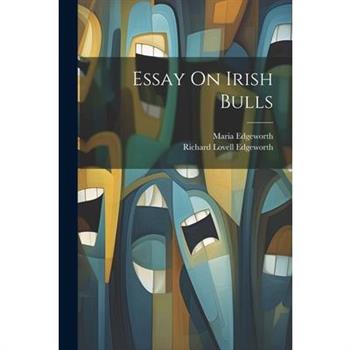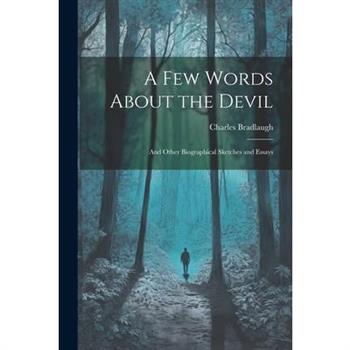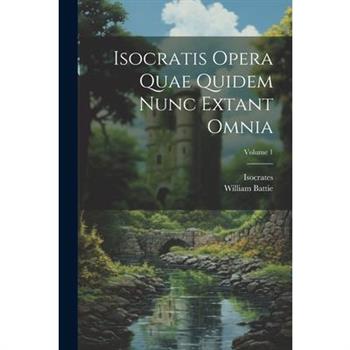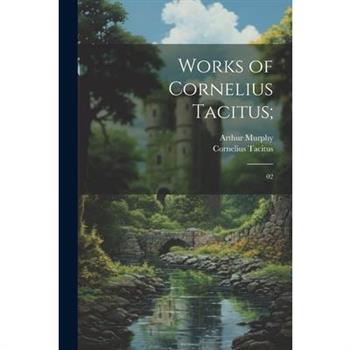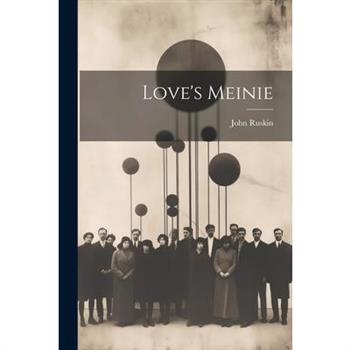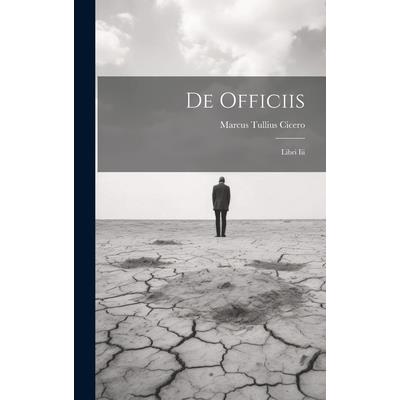Plato: Republic Book I
Plato's Republic is a central text in the Western philosophical tradition and also a specimen of its author's exceptional literary and dramatic skill. The first book introduces, and conspicuously fails to answer, the question: What is justice? It also introduces the sophist Thrasymachus, who is quite certain that he knows what justice is, namely that it is nothing other than what the dominant power in the state considers to be in its own interest. The contentious confrontation between Thrasymachus and Socrates sets the stage for Plato's controversial construction of an ideal state in which the true nature of justice will be revealed. The Commentary draws attention to the way Plato anticipates developments in later books, thus serving as an introduction to Republic as a whole. Particular attention is paid to Plato's language and style, so that students of Greek literature as well as philosophy are well served.
Plato: Republic Book I
Plato's Republic is a central text in the Western philosophical tradition and also a specimen of its author's exceptional literary and dramatic skill. The first book introduces, and conspicuously fails to answer, the question: What is justice? It also introduces the sophist Thrasymachus, who is quite certain that he knows what justice is, namely that it is nothing other than what the dominant power in the state considers to be in its own interest. The contentious confrontation between Thrasymachus and Socrates sets the stage for Plato's controversial construction of an ideal state in which the true nature of justice will be revealed. The Commentary draws attention to the way Plato anticipates developments in later books, thus serving as an introduction to Republic as a whole. Particular attention is paid to Plato's language and style, so that students of Greek literature as well as philosophy are well served.
The Medea of Euripides
This classic Greek tragedy tells the story of Medea, a woman who seeks revenge against her husband Jason when he leaves her for another woman. Combining elements of tragedy, romance, and political intrigue, Euripides' play is a timeless masterpiece of world literature. In this new edition, Mortimer Lamson Earle provides a masterful translation of the text, accompanied by insightful commentary that sheds new light on this iconic work.This work has been selected by scholars as being culturally important, and is part of the knowledge base of civilization as we know it.This work is in the "public domain in the United States of America, and possibly other nations. Within the United States, you may freely copy and distribute this work, as no entity (individual or corporate) has a copyright on the body of the work.Scholars believe, and we concur, that this work is important enough to be preserved, reproduced, and made generally available to the public. We appreciate your support of the preservation process, and thank you for being an important part of keeping this knowledge alive and relevant.
Fragmenta M.ter. Varronis. Quae Inveniuntur In Libris S.augustini
This book contains fragments of writings by Marcus Terentius Varro that are found in the works of Saint Augustine of Hippo. An important resource for scholars interested in the history of Roman literature and culture, as well as the influences of Latin literature on Christian thought.This work has been selected by scholars as being culturally important, and is part of the knowledge base of civilization as we know it.This work is in the "public domain in the United States of America, and possibly other nations. Within the United States, you may freely copy and distribute this work, as no entity (individual or corporate) has a copyright on the body of the work.Scholars believe, and we concur, that this work is important enough to be preserved, reproduced, and made generally available to the public. We appreciate your support of the preservation process, and thank you for being an important part of keeping this knowledge alive and relevant.
Works of Cornelius Tacitus;
This second volume in a comprehensive edition of Tacitus's works includes two of his most famous works: the Annals, which covers the history of Rome from the reign of Tiberius to that of Nero, and the Histories, which focuses on the tumultuous period after Nero's death. With an informative introduction and helpful notes throughout, this volume is an essential resource for anyone interested in Roman history or literature.This work has been selected by scholars as being culturally important, and is part of the knowledge base of civilization as we know it.This work is in the "public domain in the United States of America, and possibly other nations. Within the United States, you may freely copy and distribute this work, as no entity (individual or corporate) has a copyright on the body of the work.Scholars believe, and we concur, that this work is important enough to be preserved, reproduced, and made generally available to the public. We appreciate your support of the preservation process, and thank you for being an important part of keeping this knowledge alive and relevant.
Isocratis Opera Quae Quidem Nunc Extant Omnia; Volume 1
This complete collection of the works of Greek orator Isocrates provides readers with an essential resource for understanding the moral and political debates of ancient Greece. Translator William Battie offers a new and accessible translation of these important texts, which are still regarded as some of the greatest works of classical rhetoric.This work has been selected by scholars as being culturally important, and is part of the knowledge base of civilization as we know it.This work is in the "public domain in the United States of America, and possibly other nations. Within the United States, you may freely copy and distribute this work, as no entity (individual or corporate) has a copyright on the body of the work.Scholars believe, and we concur, that this work is important enough to be preserved, reproduced, and made generally available to the public. We appreciate your support of the preservation process, and thank you for being an important part of keeping this knowledge alive and relevant.
Love’s Meinie
This work by John Ruskin explores the connections between art and nature. Ruskin uses observations of plants and animals to analyze the principles of design that artists use to create their works. He also delves into the ethical responsibilities of artists to create beauty to enhance the lives of others. A must-read for anyone interested in the intersection of art and nature.This work has been selected by scholars as being culturally important, and is part of the knowledge base of civilization as we know it.This work is in the "public domain in the United States of America, and possibly other nations. Within the United States, you may freely copy and distribute this work, as no entity (individual or corporate) has a copyright on the body of the work.Scholars believe, and we concur, that this work is important enough to be preserved, reproduced, and made generally available to the public. We appreciate your support of the preservation process, and thank you for being an important part of keeping this knowledge alive and relevant.
Scenicae Romanorum Poesis Fragmenta
This book is a comprehensive collection of Roman comic poetry. It includes works by a wide range of authors, many of whom are relatively unknown today. This is an essential resource for anyone interested in Roman literature and culture.This work has been selected by scholars as being culturally important, and is part of the knowledge base of civilization as we know it.This work is in the "public domain in the United States of America, and possibly other nations. Within the United States, you may freely copy and distribute this work, as no entity (individual or corporate) has a copyright on the body of the work.Scholars believe, and we concur, that this work is important enough to be preserved, reproduced, and made generally available to the public. We appreciate your support of the preservation process, and thank you for being an important part of keeping this knowledge alive and relevant.
Glaucus; or, The Wonders of the Shore
Written in the mid-19th century, Glaucus is a lively and engaging exploration of the sea and its inhabitants. Drawing on his own adventures along the British coast, Charles Kingsley paints a vivid picture of the natural world and its many wonders in this classic of natural history literature. Filled with fascinating anecdotes and observations, this book is a must-read for anyone interested in marine biology or the natural world in general.This work has been selected by scholars as being culturally important, and is part of the knowledge base of civilization as we know it.This work is in the "public domain in the United States of America, and possibly other nations. Within the United States, you may freely copy and distribute this work, as no entity (individual or corporate) has a copyright on the body of the work.Scholars believe, and we concur, that this work is important enough to be preserved, reproduced, and made generally available to the public. We appreciate your support of the preservation process, and thank you for being an important part of keeping this knowledge alive and relevant.
Demosthenes
Step onto the floor of the ancient Athenian assembly and witness one of history's most famous speeches with this translation and analysis of Demosthenes' 'First Philippic'. Featuring expert commentary and insight from renowned scholar Karl Otto Albert Rehdantz, this book explores every nuance and layer of one of the great works of oratory.This work has been selected by scholars as being culturally important, and is part of the knowledge base of civilization as we know it.This work is in the "public domain in the United States of America, and possibly other nations. Within the United States, you may freely copy and distribute this work, as no entity (individual or corporate) has a copyright on the body of the work.Scholars believe, and we concur, that this work is important enough to be preserved, reproduced, and made generally available to the public. We appreciate your support of the preservation process, and thank you for being an important part of keeping this knowledge alive and relevant.
Latin Literature
A comprehensive survey of Latin literature, spanning from the earliest works to the late Roman Empire. It includes detailed analyses of major authors and works, as well as contextual information on the historical and cultural background of Latin literature. This book is an invaluable resource for anyone interested in the literary heritage of ancient Rome.This work has been selected by scholars as being culturally important, and is part of the knowledge base of civilization as we know it.This work is in the "public domain in the United States of America, and possibly other nations. Within the United States, you may freely copy and distribute this work, as no entity (individual or corporate) has a copyright on the body of the work.Scholars believe, and we concur, that this work is important enough to be preserved, reproduced, and made generally available to the public. We appreciate your support of the preservation process, and thank you for being an important part of keeping this knowledge alive and relevant.
Selections From Sir Thomas Malory’s Morte Darthur
This volume presents a carefully selected portion of Sir Thomas Malory's epic tale of King Arthur, drawing from the original 15th century text. These stories of chivalry, magic, and betrayal have captivated readers for centuries, and this edition offers a fresh look at Malory's masterful storytelling. With extensive notes and commentary, this volume will appeal to scholars and general readers alike.This work has been selected by scholars as being culturally important, and is part of the knowledge base of civilization as we know it.This work is in the "public domain in the United States of America, and possibly other nations. Within the United States, you may freely copy and distribute this work, as no entity (individual or corporate) has a copyright on the body of the work.Scholars believe, and we concur, that this work is important enough to be preserved, reproduced, and made generally available to the public. We appreciate your support of the preservation process, and thank you for being an important part of keeping this knowledge alive and relevant.
Frammenti, Ed Epistole
Frammenti ed Epistole is a collection of fragments and letters by Euripides, one of the most celebrated playwrights of ancient Greece. Despite being incomplete, these fragments offer a valuable insight into Euripides' life and work. This book is essential reading for anyone interested in Greek drama and literature.This work has been selected by scholars as being culturally important, and is part of the knowledge base of civilization as we know it.This work is in the "public domain in the United States of America, and possibly other nations. Within the United States, you may freely copy and distribute this work, as no entity (individual or corporate) has a copyright on the body of the work.Scholars believe, and we concur, that this work is important enough to be preserved, reproduced, and made generally available to the public. We appreciate your support of the preservation process, and thank you for being an important part of keeping this knowledge alive and relevant.
La Clemenza Di Tito
Experience the timeless beauty of this classic operatic masterpiece, composed by Pietro Metastasio and set to music by a range of celebrated composers. With a compelling story of intrigue, betrayal, and redemption set against a backdrop of ancient Rome, this work is a must-read for anyone interested in the rich cultural heritage of Western Europe.This work has been selected by scholars as being culturally important, and is part of the knowledge base of civilization as we know it.This work is in the "public domain in the United States of America, and possibly other nations. Within the United States, you may freely copy and distribute this work, as no entity (individual or corporate) has a copyright on the body of the work.Scholars believe, and we concur, that this work is important enough to be preserved, reproduced, and made generally available to the public. We appreciate your support of the preservation process, and thank you for being an important part of keeping this knowledge alive and relevant.
Chronicle. Translated out of French by John Bourchier [and] Lord Berners, Annis 1523-25, With an Introd. by William Paton Ker; Volume 2
This text is a translation of Jean Froissart's Chronicles of France, and covers the years 1327-1400. It is an important and celebrated work of medieval literature. This edition includes an introduction by William Paton Ker.This work has been selected by scholars as being culturally important, and is part of the knowledge base of civilization as we know it.This work is in the "public domain in the United States of America, and possibly other nations. Within the United States, you may freely copy and distribute this work, as no entity (individual or corporate) has a copyright on the body of the work.Scholars believe, and we concur, that this work is important enough to be preserved, reproduced, and made generally available to the public. We appreciate your support of the preservation process, and thank you for being an important part of keeping this knowledge alive and relevant.
Aelfric’s Lives of Saints; Volume 1
Written in Old English by Abbot Aelfric of Eynsham in the late 10th century, this collection of hagiographies offers a fascinating glimpse into the religious and cultural life of Anglo-Saxon England. This edition features a modern English translation and extensive scholarly notes, making it an invaluable resource for anyone interested in early English literature and culture.This work has been selected by scholars as being culturally important, and is part of the knowledge base of civilization as we know it.This work is in the "public domain in the United States of America, and possibly other nations. Within the United States, you may freely copy and distribute this work, as no entity (individual or corporate) has a copyright on the body of the work.Scholars believe, and we concur, that this work is important enough to be preserved, reproduced, and made generally available to the public. We appreciate your support of the preservation process, and thank you for being an important part of keeping this knowledge alive and relevant.
Herodotos
Herodotus was an ancient Greek historian who wrote one of the most important works of history ever composed. His Histories are a fascinating account of the Persian Wars and the cultures and peoples of the ancient world. Urania is a section of the work that deals with astronomy and the divine. In it, Herodotus explores the myths and beliefs of the ancient Greeks about the stars and planets. This book will appeal to anyone with an interest in history, mythology and science.This work has been selected by scholars as being culturally important, and is part of the knowledge base of civilization as we know it.This work is in the "public domain in the United States of America, and possibly other nations. Within the United States, you may freely copy and distribute this work, as no entity (individual or corporate) has a copyright on the body of the work.Scholars believe, and we concur, that this work is important enough to be preserved, reproduced, and made generally available to the public. We appreciate your support of the preservation process, and thank you for being an important part of keeping this knowledge alive and relevant.
The Georgian Chronicle
The Georgian Chronicle was originally composed in Georgian by several authors between the 6th and 13th centuries. Sometime in the late 12th or early 13th centuries, an unknown cleric translated the Chronicle into Classical Armenian. This medieval Armenian rendering is the one that is translated here. The Georgian Chronicle describes the history of Iberia/Georgia, Armenia's northern neighbor, from legendary times to the 12th century. It is a rich source of unique information on topics such as Caucasian ethnography, Armeno-Georgian relations, the history of Iran, the history of the Jewish community of Georgia and its role in the Christianization of the country, the birth of Islam, and the coming of the Seljuks.
The Cults of the Greek States
Learn about the religious practices and beliefs of the ancient Greeks in this classic study by a pioneering scholar of Greek religion and culture.This work has been selected by scholars as being culturally important, and is part of the knowledge base of civilization as we know it.This work is in the "public domain in the United States of America, and possibly other nations. Within the United States, you may freely copy and distribute this work, as no entity (individual or corporate) has a copyright on the body of the work.Scholars believe, and we concur, that this work is important enough to be preserved, reproduced, and made generally available to the public. We appreciate your support of the preservation process, and thank you for being an important part of keeping this knowledge alive and relevant.
A History of Classical Scholarship ...
This comprehensive history of classical scholarship traces the evolution of classical studies from the ancient world to the end of the Middle Ages. Drawing on a wide range of sources, Sandys provides a rich and detailed account of the key figures and ideas that shaped the field. Essential reading for anyone interested in classical studies and the history of scholarship.This work has been selected by scholars as being culturally important, and is part of the knowledge base of civilization as we know it.This work is in the "public domain in the United States of America, and possibly other nations. Within the United States, you may freely copy and distribute this work, as no entity (individual or corporate) has a copyright on the body of the work.Scholars believe, and we concur, that this work is important enough to be preserved, reproduced, and made generally available to the public. We appreciate your support of the preservation process, and thank you for being an important part of keeping this knowledge alive and relevant.
The Ormulum; Volume 1
Robert Meadows White's "The Ormulum" is a Middle English verse homily in 10,000 lines, attributed to a monk named Orm. This edition provides modern readers with an accessible translation of the text and provides valuable insight into the evolution of the English language.This work has been selected by scholars as being culturally important, and is part of the knowledge base of civilization as we know it.This work is in the "public domain in the United States of America, and possibly other nations. Within the United States, you may freely copy and distribute this work, as no entity (individual or corporate) has a copyright on the body of the work.Scholars believe, and we concur, that this work is important enough to be preserved, reproduced, and made generally available to the public. We appreciate your support of the preservation process, and thank you for being an important part of keeping this knowledge alive and relevant.
Essays
This book is a collection of essays by the celebrated Victorian poet and essayist Alice Meynell. Meynell's keen insights and elegant prose make this a must-read for anyone interested in the great literary works of the 19th century. Her essays cover a wide range of topics, from art and literature to religion and culture, and are sure to provide the reader with much food for thought.This work has been selected by scholars as being culturally important, and is part of the knowledge base of civilization as we know it.This work is in the "public domain in the United States of America, and possibly other nations. Within the United States, you may freely copy and distribute this work, as no entity (individual or corporate) has a copyright on the body of the work.Scholars believe, and we concur, that this work is important enough to be preserved, reproduced, and made generally available to the public. We appreciate your support of the preservation process, and thank you for being an important part of keeping this knowledge alive and relevant.
[Publications]. Original Series
This volume from the Early English Text Society contains a wealth of historical and literary materials from medieval England. With texts ranging from sermons to ballads to legal documents, this collection offers insights into the rich cultural and linguistic diversity of the English Middle Ages.This work has been selected by scholars as being culturally important, and is part of the knowledge base of civilization as we know it.This work is in the "public domain in the United States of America, and possibly other nations. Within the United States, you may freely copy and distribute this work, as no entity (individual or corporate) has a copyright on the body of the work.Scholars believe, and we concur, that this work is important enough to be preserved, reproduced, and made generally available to the public. We appreciate your support of the preservation process, and thank you for being an important part of keeping this knowledge alive and relevant.
La Vita Nuova e Il Canzoniere, Ridotti a Miglior Lezione e Commentati da Giambattista Giuliani
This book is the 'Vita Nuova' and 'Canzoniere' works by Dante Alighieri, edited and commented on by Giovanni Battista Giuliani.This work has been selected by scholars as being culturally important, and is part of the knowledge base of civilization as we know it.This work is in the "public domain in the United States of America, and possibly other nations. Within the United States, you may freely copy and distribute this work, as no entity (individual or corporate) has a copyright on the body of the work.Scholars believe, and we concur, that this work is important enough to be preserved, reproduced, and made generally available to the public. We appreciate your support of the preservation process, and thank you for being an important part of keeping this knowledge alive and relevant.
The Classics, Greek & Latin; the Most Celebrated Works of Hellenic and Roman Literatvre, Embracing Poetry, Romance, History, Oratory, Science, and Philosophy; Volume 15
This magnificent volume brings together some of the greatest works of Western literature, including poetry, romance, history, oratory, science, and philosophy. From Homer and Virgil to Plato and Aristotle, Miller's collection offers a comprehensive overview of the classical tradition and its enduring influence on human thought and expression. A must-read for anyone interested in the history of ideas.This work has been selected by scholars as being culturally important, and is part of the knowledge base of civilization as we know it.This work is in the "public domain in the United States of America, and possibly other nations. Within the United States, you may freely copy and distribute this work, as no entity (individual or corporate) has a copyright on the body of the work.Scholars believe, and we concur, that this work is important enough to be preserved, reproduced, and made generally available to the public. We appreciate your support of the preservation process, and thank you for being an important part of keeping this knowledge alive and relevant.
The Vulgate Version of the Arthurian Romances; Volume 7
Sommer's authoritative edition of the Vulgate Cycle is a landmark in Arthurian scholarship. This first volume includes the texts of 'Lancelot' and 'Galahad, ' two of the most famous and influential romances in the Arthurian canon. With its detailed annotations, extensive appendices, and meticulous textual analysis, this book is an essential resource for anyone interested in the history and literature of the Middle Ages.This work has been selected by scholars as being culturally important, and is part of the knowledge base of civilization as we know it.This work is in the "public domain in the United States of America, and possibly other nations. Within the United States, you may freely copy and distribute this work, as no entity (individual or corporate) has a copyright on the body of the work.Scholars believe, and we concur, that this work is important enough to be preserved, reproduced, and made generally available to the public. We appreciate your support of the preservation process, and thank you for being an important part of keeping this knowledge alive and relevant.
Sophocles
This book provides a comprehensive overview of the works of Sophocles, one of ancient Greece's most celebrated playwrights. Jebb examines each of Sophocles' plays in detail, providing critical notes and a translation of the original text into English prose.This work has been selected by scholars as being culturally important, and is part of the knowledge base of civilization as we know it.This work is in the "public domain in the United States of America, and possibly other nations. Within the United States, you may freely copy and distribute this work, as no entity (individual or corporate) has a copyright on the body of the work.Scholars believe, and we concur, that this work is important enough to be preserved, reproduced, and made generally available to the public. We appreciate your support of the preservation process, and thank you for being an important part of keeping this knowledge alive and relevant.
Epic and Saga
This anthology of epic poems and sagas from around the world is a celebration of some of the greatest stories ever told. From Homer's Odyssey to the Icelandic Sagas, Eliot has chosen works that have stood the test of time and continue to captivate readers. This volume is a perfect introduction for readers looking to explore the rich tradition of epic and saga literature.This work has been selected by scholars as being culturally important, and is part of the knowledge base of civilization as we know it.This work is in the "public domain in the United States of America, and possibly other nations. Within the United States, you may freely copy and distribute this work, as no entity (individual or corporate) has a copyright on the body of the work.Scholars believe, and we concur, that this work is important enough to be preserved, reproduced, and made generally available to the public. We appreciate your support of the preservation process, and thank you for being an important part of keeping this knowledge alive and relevant.
The Attic Nights of Aulus Gellius; Volume 3
A collection of miscellaneous notes taken during conversations with various literary figures and scholars, spanning a wide range of topics including but not limited to literature, philosophy, and history.This work has been selected by scholars as being culturally important, and is part of the knowledge base of civilization as we know it.This work is in the "public domain in the United States of America, and possibly other nations. Within the United States, you may freely copy and distribute this work, as no entity (individual or corporate) has a copyright on the body of the work.Scholars believe, and we concur, that this work is important enough to be preserved, reproduced, and made generally available to the public. We appreciate your support of the preservation process, and thank you for being an important part of keeping this knowledge alive and relevant.
The...Hitopad矇sa [Books 1-4]
This volume contains an English translation of the first four books of the Hitopadesa, a classical Sanskrit text containing fables and moral tales. The book provides a fascinating insight into ancient Indian literature and wisdom, and is an excellent resource for students of South Asian history and culture.This work has been selected by scholars as being culturally important, and is part of the knowledge base of civilization as we know it.This work is in the "public domain in the United States of America, and possibly other nations. Within the United States, you may freely copy and distribute this work, as no entity (individual or corporate) has a copyright on the body of the work.Scholars believe, and we concur, that this work is important enough to be preserved, reproduced, and made generally available to the public. We appreciate your support of the preservation process, and thank you for being an important part of keeping this knowledge alive and relevant.
Wine, Women, and Song
First published in 1884, this groundbreaking study by John Addington Symonds introduced many readers to the poetic traditions of medieval Latin students. Featuring translations of poems on a range of topics, from love and lust to scholarship and bohemian life, as well as an illuminating essay by Symonds on the cultural and historical context of these works, this book remains an essential text for anyone interested in the literature of the Middle Ages.This work has been selected by scholars as being culturally important, and is part of the knowledge base of civilization as we know it.This work is in the "public domain in the United States of America, and possibly other nations. Within the United States, you may freely copy and distribute this work, as no entity (individual or corporate) has a copyright on the body of the work.Scholars believe, and we concur, that this work is important enough to be preserved, reproduced, and made generally available to the public. We appreciate your support of the preservation process, and thank you for being an important part of keeping this knowledge alive and relevant.
De Officiis
Marcus Tullius Cicero's essay on morals and duty is presented in Latin with a German translation by Rudolf St羹renburg.This work has been selected by scholars as being culturally important, and is part of the knowledge base of civilization as we know it.This work is in the "public domain in the United States of America, and possibly other nations. Within the United States, you may freely copy and distribute this work, as no entity (individual or corporate) has a copyright on the body of the work.Scholars believe, and we concur, that this work is important enough to be preserved, reproduced, and made generally available to the public. We appreciate your support of the preservation process, and thank you for being an important part of keeping this knowledge alive and relevant.
Peniarth Ms. 57
Discover one of the hidden treasures of Welsh medieval literature. Peniarth MS 57 is a manuscript containing some of the most important works of Welsh poetry and prose, including The Book of Taliesin, The Book of Aneirin, and The Mabinogion. This book provides a detailed analysis of the manuscript's content and context, as well as historical and cultural background. It also includes a critical edition of the texts and translations into modern Welsh and English. A must-read for anyone interested in the rich heritage of Welsh literature.This work has been selected by scholars as being culturally important, and is part of the knowledge base of civilization as we know it.This work is in the "public domain in the United States of America, and possibly other nations. Within the United States, you may freely copy and distribute this work, as no entity (individual or corporate) has a copyright on the body of the work.Scholars believe, and we concur, that this work is important enough to be preserved, reproduced, and made generally available to the public. We appreciate your support of the preservation process, and thank you for being an important part of keeping this knowledge alive and relevant.
Greek Papyri in the British Museum
This catalogue provides a comprehensive guide to the collection of Greek papyri held in the British Museum. It includes transcriptions of the texts themselves, as well as details about their historical and cultural context.This work has been selected by scholars as being culturally important, and is part of the knowledge base of civilization as we know it.This work is in the "public domain in the United States of America, and possibly other nations. Within the United States, you may freely copy and distribute this work, as no entity (individual or corporate) has a copyright on the body of the work.Scholars believe, and we concur, that this work is important enough to be preserved, reproduced, and made generally available to the public. We appreciate your support of the preservation process, and thank you for being an important part of keeping this knowledge alive and relevant.
Eight Orations of Cicero
Bringing together eight of Cicero's most famous orations, this book offers readers a compelling insight into the politics and culture of ancient Rome. With detailed commentary and illuminating translations, Charles Henry Forbes provides readers with the tools they need to understand and appreciate the importance of Cicero's work.This work has been selected by scholars as being culturally important, and is part of the knowledge base of civilization as we know it.This work is in the "public domain in the United States of America, and possibly other nations. Within the United States, you may freely copy and distribute this work, as no entity (individual or corporate) has a copyright on the body of the work.Scholars believe, and we concur, that this work is important enough to be preserved, reproduced, and made generally available to the public. We appreciate your support of the preservation process, and thank you for being an important part of keeping this knowledge alive and relevant.
Introductory Studies In Greek Art
In this seminal work, author Jane Ellen Harrison examines the artistic traditions of ancient Greece, focusing particularly on the period from the prehistoric era to the classical period. Drawing on archaeological and literary sources, Harrison provides a detailed and insightful analysis of the stylistic and thematic characteristics of Greek art. The book is illustrated with numerous photographs and drawings, making it an essential resource for art historians and archaeologists.This work has been selected by scholars as being culturally important, and is part of the knowledge base of civilization as we know it.This work is in the "public domain in the United States of America, and possibly other nations. Within the United States, you may freely copy and distribute this work, as no entity (individual or corporate) has a copyright on the body of the work.Scholars believe, and we concur, that this work is important enough to be preserved, reproduced, and made generally available to the public. We appreciate your support of the preservation process, and thank you for being an important part of keeping this knowledge alive and relevant.
... Greek Classics
A collection of classic Greek literature featuring works such as the Iliad and the Odyssey.This work has been selected by scholars as being culturally important, and is part of the knowledge base of civilization as we know it.This work is in the "public domain in the United States of America, and possibly other nations. Within the United States, you may freely copy and distribute this work, as no entity (individual or corporate) has a copyright on the body of the work.Scholars believe, and we concur, that this work is important enough to be preserved, reproduced, and made generally available to the public. We appreciate your support of the preservation process, and thank you for being an important part of keeping this knowledge alive and relevant.
Il Mondo Alla Roversa O Sia Le Donne Che Commandano
Laugh-out-loud with this hilarious play by Carlo Goldoni, one of the greatest Italian playwrights of the 18th century. Il Mondo Alla Rovescia explores gender roles and societal norms through a witty and farcical plot. The women of the play are in charge and the men are reduced to more subservient roles. A must-read for theater enthusiasts and anyone looking for classic comedy.This work has been selected by scholars as being culturally important, and is part of the knowledge base of civilization as we know it.This work is in the "public domain in the United States of America, and possibly other nations. Within the United States, you may freely copy and distribute this work, as no entity (individual or corporate) has a copyright on the body of the work.Scholars believe, and we concur, that this work is important enough to be preserved, reproduced, and made generally available to the public. We appreciate your support of the preservation process, and thank you for being an important part of keeping this knowledge alive and relevant.
The Freedmen’s Book
Published in 1865, The Freedmen's Book is a collection of stories, poems, and essays aimed at educating newly-freed Black people in the aftermath of the Civil War. The book was edited by abolitionist and author Lydia Maria Child, who saw education as a key element in the struggle for Black freedom and equality. The Freedmen's Book remains a valuable artifact of the early years of Reconstruction and a testament to the importance of education in the fight for social justice.This work has been selected by scholars as being culturally important, and is part of the knowledge base of civilization as we know it.This work is in the "public domain in the United States of America, and possibly other nations. Within the United States, you may freely copy and distribute this work, as no entity (individual or corporate) has a copyright on the body of the work.Scholars believe, and we concur, that this work is important enough to be preserved, reproduced, and made generally available to the public. We appreciate your support of the preservation process, and thank you for being an important part of keeping this knowledge alive and relevant.
Ballads From Manuscripts; Volume 1
This fascinating collection of ballads captures the essence of medieval literature and storytelling. Drawing from various manuscripts, this book presents an array of ballads that are sure to transport readers to another time and place. A must-read for anyone with an interest in English literature or medieval history.This work has been selected by scholars as being culturally important, and is part of the knowledge base of civilization as we know it.This work is in the "public domain in the United States of America, and possibly other nations. Within the United States, you may freely copy and distribute this work, as no entity (individual or corporate) has a copyright on the body of the work.Scholars believe, and we concur, that this work is important enough to be preserved, reproduced, and made generally available to the public. We appreciate your support of the preservation process, and thank you for being an important part of keeping this knowledge alive and relevant.
The Origin of Building, or, The Plagiarism of the Heathens Detected
This book, published in the 18th century, argues that the architectural practices of ancient civilizations were actually plagiarized from the Bible. The book includes illustrations and detailed descriptions of ancient architectural features.This work has been selected by scholars as being culturally important, and is part of the knowledge base of civilization as we know it.This work is in the "public domain in the United States of America, and possibly other nations. Within the United States, you may freely copy and distribute this work, as no entity (individual or corporate) has a copyright on the body of the work.Scholars believe, and we concur, that this work is important enough to be preserved, reproduced, and made generally available to the public. We appreciate your support of the preservation process, and thank you for being an important part of keeping this knowledge alive and relevant.




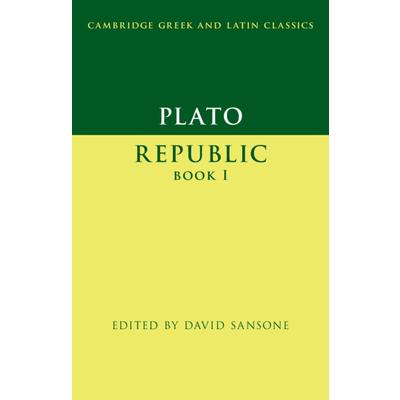

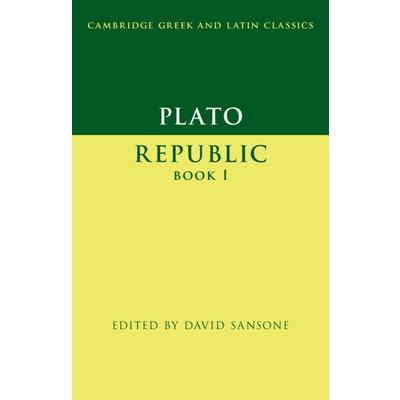








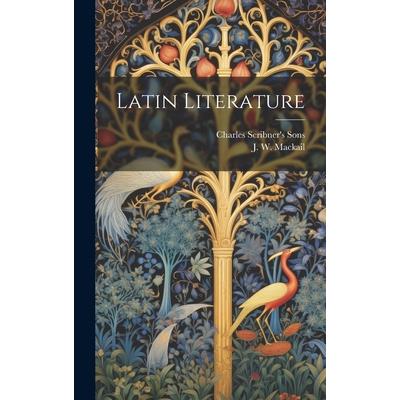


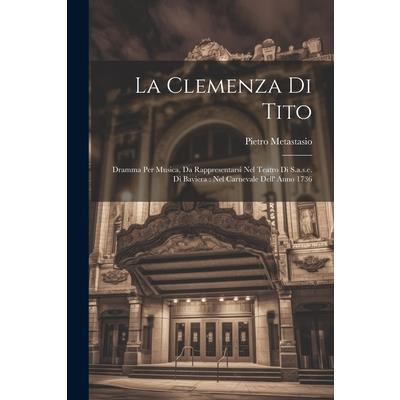
![Chronicle. Translated out of French by John Bourchier [and] Lord Berners, Annis 1523-25, With an Introd. by William Paton Ker; Volume 2 Chronicle. Translated out of French by John Bourchier [and] Lord Berners, Annis 1523-25, With an Introd. by William Paton Ker; Volume 2](https://cdn.kingstone.com.tw/english/images/product/6150/9781021466150.jpg)
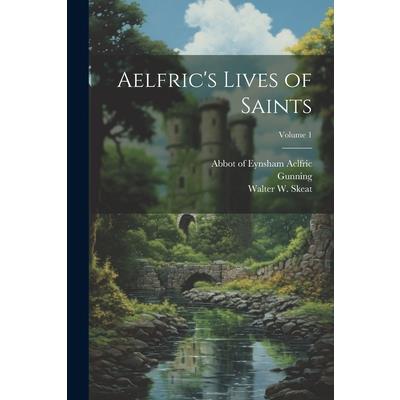
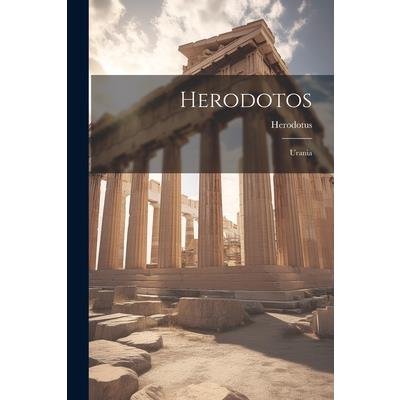
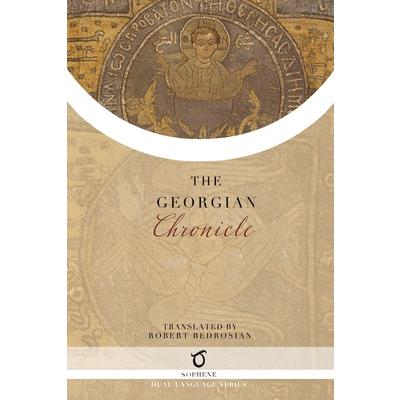
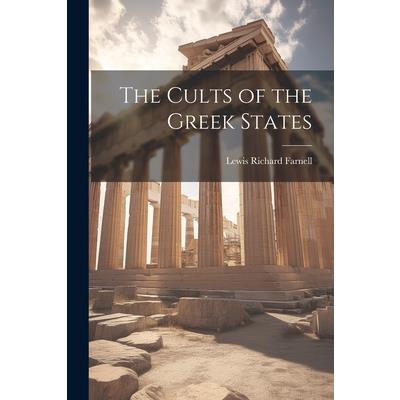



![[Publications]. Original Series [Publications]. Original Series](https://cdn.kingstone.com.tw/english/images/product/7951/9781021517951.jpg)
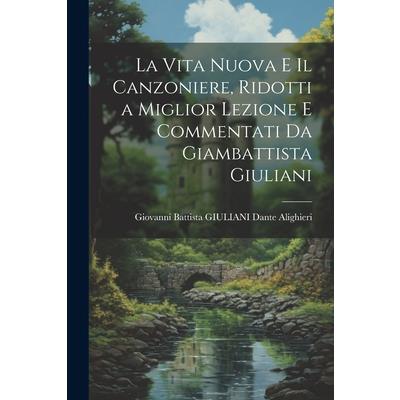

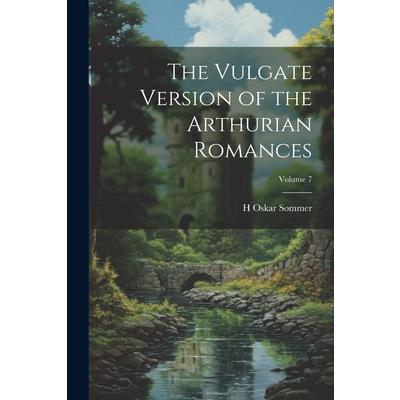
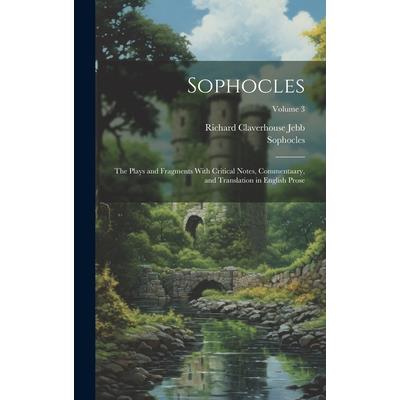
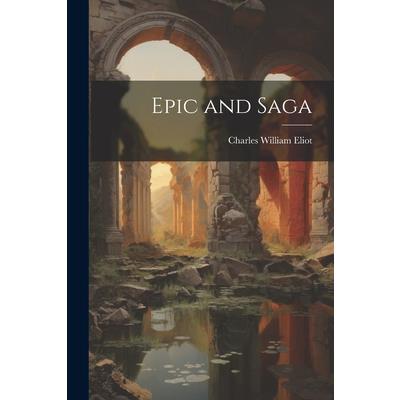

![The...Hitopad矇sa [Books 1-4] The...Hitopad矇sa [Books 1-4]](https://cdn.kingstone.com.tw/english/images/product/6236/9781021906236.jpg)
